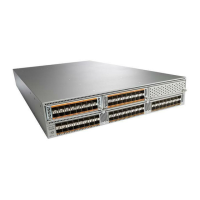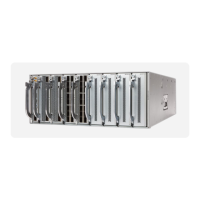•
When more than one event statement is included in an EEM policy, each event statement must have a
tag keyword with a unique tag argument.
•
EEM event correlation does not override the system default policies.
•
Default action execution is not supported for policies that are configured with tagged events.
Default Settings for EEM
The following table lists the default setting for EEM parameters:
Table 32: Default EEM Parameters
DefaultParameters
ActiveSystem Policies
Configuring EEM
Defining an Environment Variable
You can define a variable to serve as a parameter in an EEM policy.
Before You Begin
Make sure that you are in the correct VDC. To change the VDC, use the switchto vdc command.
Procedure
PurposeCommand or Action
Enters global configuration mode.switch# configure terminal
Step 1
Creates an environment variable for EEM. The
variable-name can be any case-sensitive alphanumeric
switch(config)# event manager
environment variable-name
variable-value
Step 2
string up to 29 characters. The variable-value can be
any quoted alphanumeric string up to 39 characters.
(Optional)
Displays information about the configured environment
variables. Enclose the string in quotation marks.
switch(config)# show event manager
environment {variable-name | all}
Step 3
(Optional)
Saves the change persistently through reboots and restarts
by copying the running configuration to the startup
configuration.
switch(config)# copy running-config
startup-config
Step 4
Cisco Nexus 5600 Series NX-OS System Management Configuration Guide, Release 7.x
240 OL-31641-01
Configuring EEM
Default Settings for EEM

